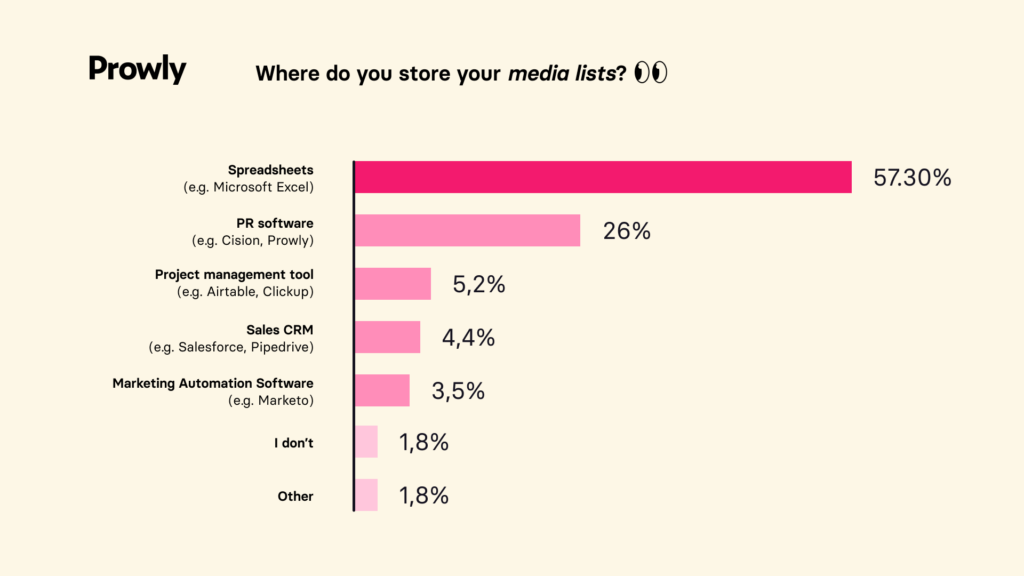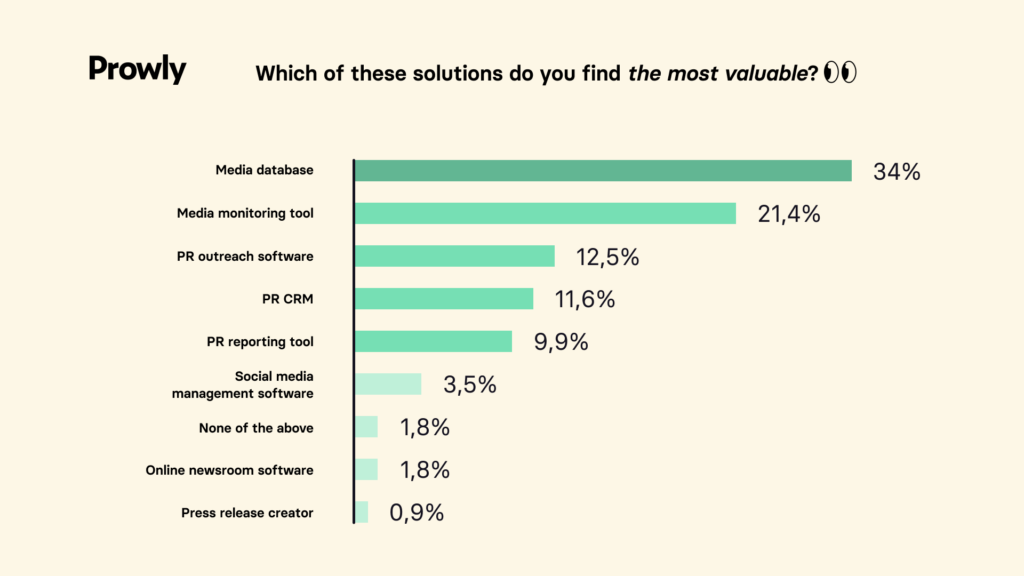Can you name an industry that isn’t being transformed by technological advances that offer new and better ways to do things?
Probably not, and neither can we. There is a constant stream of new applications that help us get things done faster, make the final product better and, often, save us money in the process. We’re spoiled for choice when it comes to digital tools and who doesn’t love being spoiled?
The same idea definitely applies to the PR industry, where adapting to available technology has become a must. This doesn’t mean that old-school approaches to publicity and media are no longer relevant — far from it — just that adding a tech element to the mix helps to get everything done faster, with less headache and often with better results.
As the team behind a tech product oriented towards the PR world, it’s important for us to keep our finger on the digital pulse of the industry. That’s why we reached out to nearly two hundred PR professionals to gather information on what kinds of tech they use, what they use it for and how often they use it.
The detailed report that we’ve put together from the feedback we received along with our own research offers a long list of insights into the modern role of technology in public relations.
We’re going to use this and a following post to give you the TL;DR version of the full report, which you can download here. Yes, that’s right — there is so much to discover in the full version of our “The State of PR Technology 2022” report that we need two blog posts for the short version.
Google search queries reveal a growing awareness of PR tools…
The numbers don’t lie – search volumes for phrases like “digital pr tools”, “pr database”, “pr crm” and others have doubled or even tripled in the last three years. Searches for “public relations software” are up ten times in the same period. Curiously, though, search volumes for “pr tools” are actually down a bit.
The takeaway here is that the PR industry is more aware of the existence and availability of dedicated tech solutions and familiar enough with them to be fairly specific when looking for information and that’s a sure sign of progress.
We are curious to know more about where this growing awareness is coming from. But whether from colleagues, industry publications, an awareness that rivals are using digital tools or any number of other sources, the trend towards greater recognition is clear.
…but adoption of these same tools is still slow
This increased attention on the topic of tech solutions that streamline PR operations doesn’t always translate directly into implementation in the office. “Nothing” is still a fairly common answer to questions that start with “What do you use to…?”
A good example of this reluctance to embrace tech tools, even those designed specifically for PR work, is seen in where PR pros store their media contact lists. In response to a question asking them where they keep their lists, the number one answer by far was “Spreadsheets”, like those found in Microsoft Office or Google Drive.

Ten years ago this was ok, but there are much better ways to do things now!
A familiar name leads in CRMs, but competitors are gaining
When it comes to a CRM for PR, Cision enjoys the benefits of an established brand and long market presence. They were named as the go-to choice by 30% of our survey respondents.
This might be a bit surprising when you consider that Cision has a fairly high price point, no PR CRM or online newsroom and doesn’t offer a free trial. What Cision doesn’t offer is available from an increasing number of eager primary competitors like Muck Rack, Meltwater and Prowly.
On the subject of CRMs for PR organizations, we were surprised to discover that almost one in five agencies don’t use public relations tools at all.
You’ll find a comprehensive comparison of the services offered by the leading PR CRMs in the table included in the full report.
Media databases & media monitoring are the most valuable tools
In response to “Which tech solutions do you find the most valuable?”, “Media database” and “Media monitoring tool” are way out in front of everything else. This should come as no surprise for a couple of reasons.

First, finding and connecting with the right journalists is central to PR success so it makes sense that a media database would be where those in the industry found the most value (and searched first for help). Media databases are the obvious place to start when trying to up your game and you can benefit from them on day one.
As for “media monitoring tools”, their profile has risen dramatically in the last couple of years. Organizations of every type and size have recognized the importance of knowing who’s talking about you and what they’re saying. It’s a good bet that media monitoring tools will continue to rise in popularity.
Looking at the bottom of the list of responses to “Which tech solutions do you find the most valuable?”, we find things like “press release creator” and “online newsroom” software. Here, we should keep two things in mind.
First of all, this does not at all mean that these features are not useful, just that most respondents found “media database” and “media monitoring” more useful. Second, their low positions in the results are also a result of lower awareness that solutions for creating better press releases or managing an online newsroom exist. Online newsrooms in particular are quite a recent innovation.
Not a lot of satisfaction with PR tools
According to the results of our survey, just over 80% of PR professionals use some kind of PR software. However, only about 35% report being satisfied with the tools they use.
When less than half of the market says they’re happy with their choice, something has gone wrong. Why are they not satisfied? Most of the answers fall into three broad categories:
- Comprehensiveness. There is something to be said for the convenience of all-in-one tools over a Frankenstein-style approach built out of various different parts that don’t always really work well together. If you’re stuck with a long list of logins and passwords to the various tools your office has acquired over the years, it’s perfectly understandable if you’re not exactly enthusiastic about your PR “solution”. You’ll be amazed at how your PR workflow improves when you can easily move from one part of the process to another within the same tool. Would you rather find & pitch a journalist directly with a press release you created, get analytical insights for the mails you send and monitor the media for the response to your pitch in one tool or in five? Yeah, us too.
- Price. Budgets still decide a lot of arguments and we can all understand that. Plenty of PR practitioners would like to upgrade what they use at work but the budget simply doesn’t allow for it. It’s important to remember here that not every great PR tech solution is expensive, so this might be a case of not looking at all available options.
- Usability / UX. A digital tool that makes you feel like you need to hire a team of computer experts to help run it will soon be ignored and forgotten. When it comes to PR software, like any other kind of software, some interfaces and user experiences are better than others. If your PR tool is difficult or uncomfortable to use, remember that you have other choices.
In this post, we covered more interesting insights from our “The State of PR Technology 2022” report, all based on feedback we got from nearly 200 PR pros from all over the industry.


